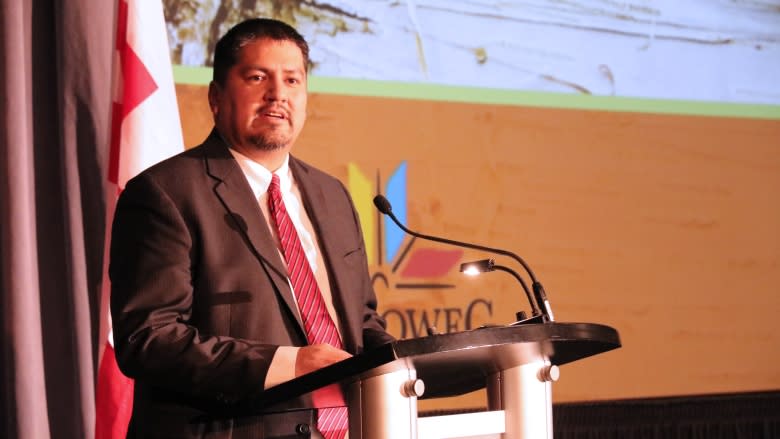8,700 Mi'kmaq students to learn coding, robotics under $1M program
Coding is already part of the public school curriculum up to Grade 6 in Nova Scotia, but new funds that are part of a $50 million national program will help ensure First Nations schools in the province are up to the same level.
The First Nations investments are part of a program called CanCODE, which is to be rolled out over the next two years and is aimed at teaching children about digital coding, 3D animation, robotics engineering and "big data" related technology.
The Department of Innovation, Science and Economic Development will provide $1 million to help 8,700 First Nations students in Nova Scotia develop skills in coding, robotics and information technology.
At a launch event in Halifax on Tuesday, President of the Treasury Board Scott Brison announced the $1 million will be distributed among 13 First Nation communities in Nova Scotia, encompassing students from kindergarten to Grade 12 in First Nations and public schools alike.
"Our children are growing up through a time of great change," said Brison.
"Technology is disrupting all facets of our lives. Our children can't escape it, but with the right education, our children can help shape it."
Closing the gap
While First Nations children are the fastest growing demographic in Canada, research shows they face the most restricted access to technology in comparison to the rest of the country.
"Through innovation and partnerships, we're going to close that gap," said Chris Googoo, chief operating officer for Ulnooweg Development Group, one of the not-for-profit organizations managing the CanCODE program.
Googoo added the investment will go directly to the students, through tangible resources like laptops and tablets.
As well, Googoo said the development of labs and workshops led by industry experts like the Canada Space Agency will improve employability for First Nations students in a job market where digital skills are essential.
'Opening up that door'
"I'm not looking on reserve — I want these kids to look beyond," said Googoo.
"It's breaking the cycle that just focuses on jobs on reserves. I want them to explore the world, and [the program is] opening up that door for them."
Chief Sidney Peters of Glooscap First Nation in Nova Scotia said he's hopeful the program will allow the students to diversify their skills, and find work at home.
"We know there's a lot of unemployment in our communities," said Peters.
"I think [the program] will allow us to create jobs, too. A lot of work in the digital field can be done from home."
Peters said if anyone from First Nations communities can adapt and capitalize on changing technologies, it's the youth.
"They already seem to be so far ahead of us," Peters said with a chuckle.
"It's about understanding what technology can do and not being scared to do it. Let's create that environment and atmosphere for them to build on what they know."
Ulnooweg is one of two Indigenous-led organizations to receive funding. The Manitoba First Nation Education Resource Centre Inc., which provides educational resources to up to 2,000 students across 54 First Nations, received a $500,000 investment under CanCODE.
It says it will be rolling out pilot projects this year to enhance its services in technological fields.




